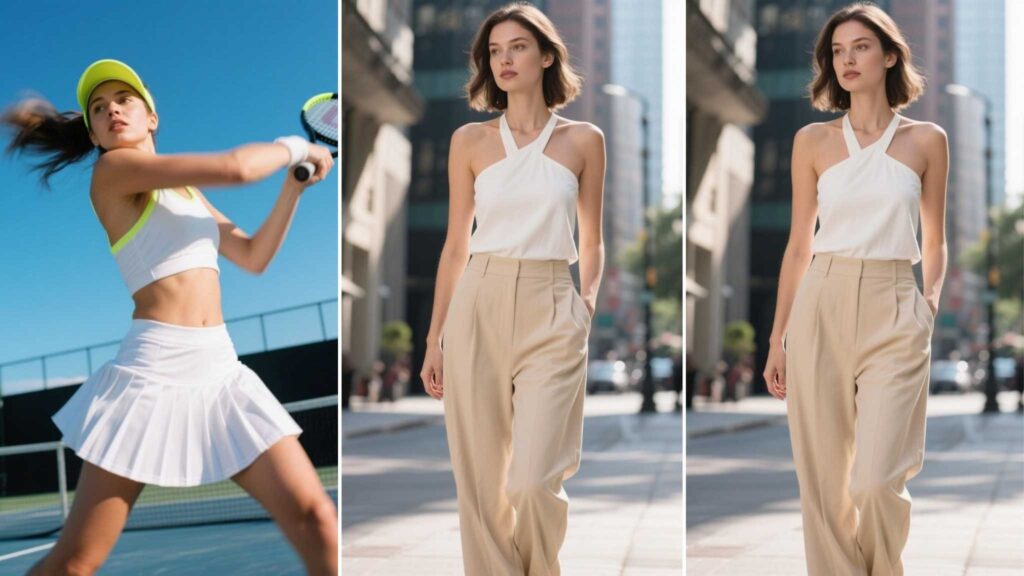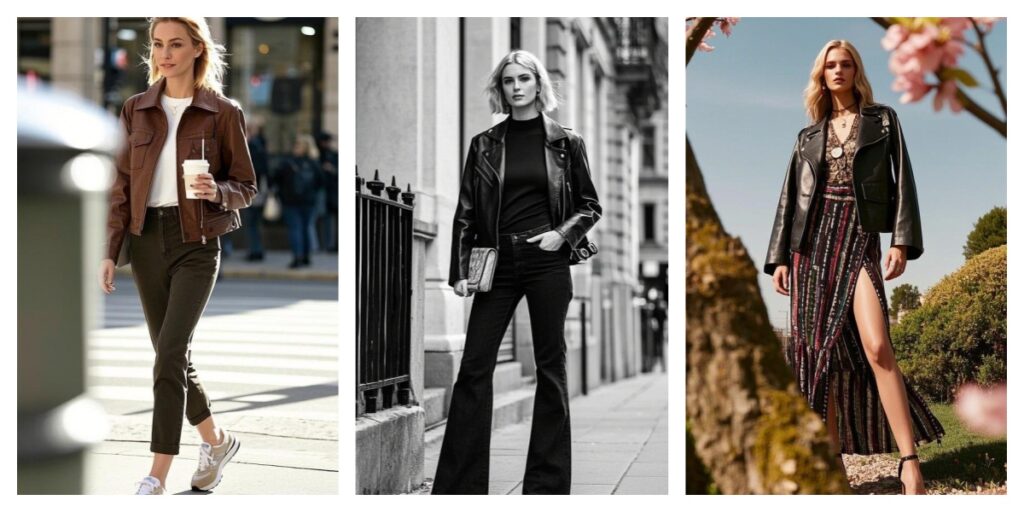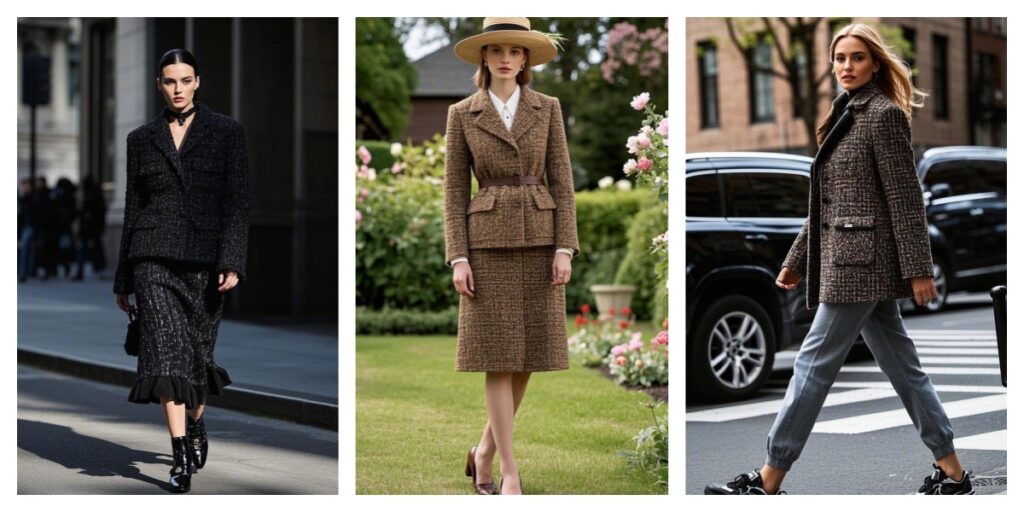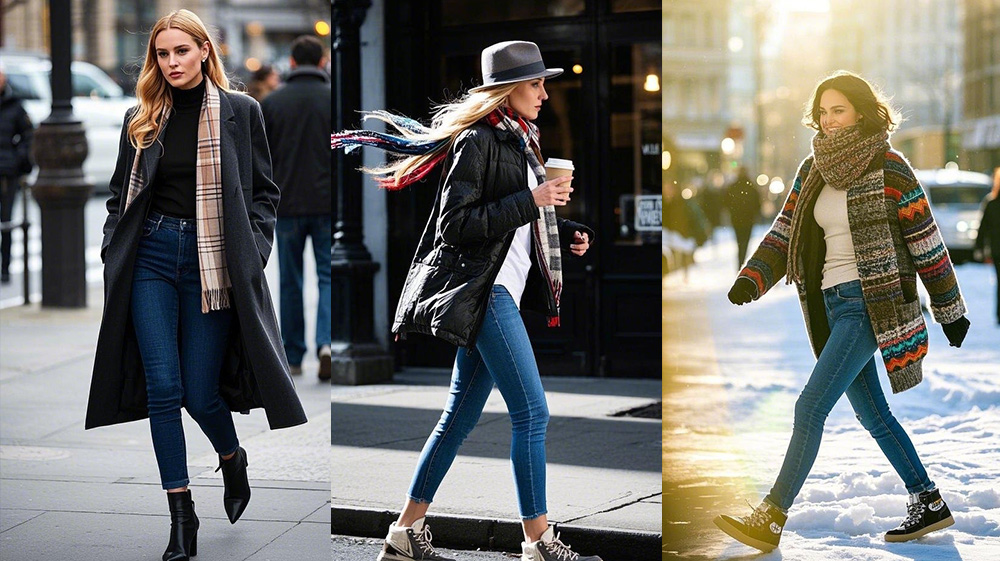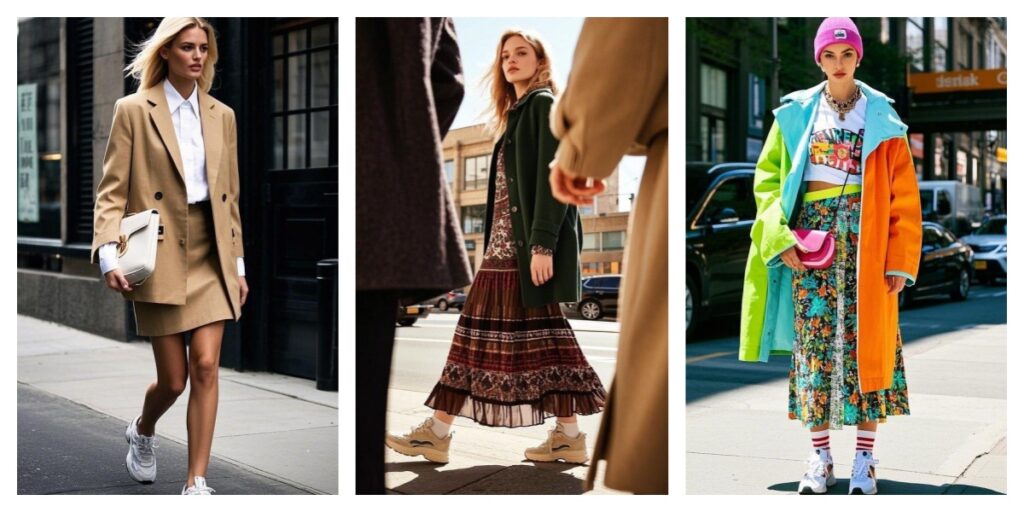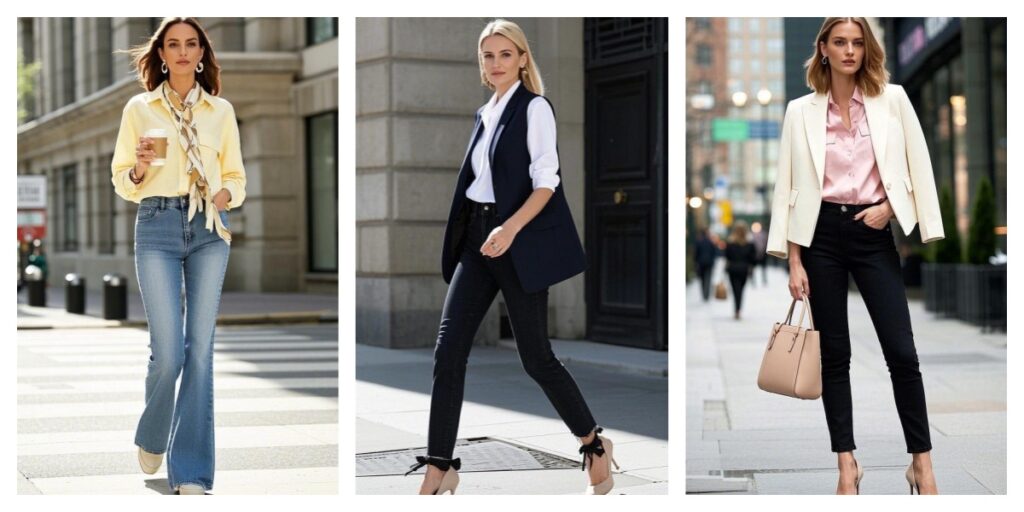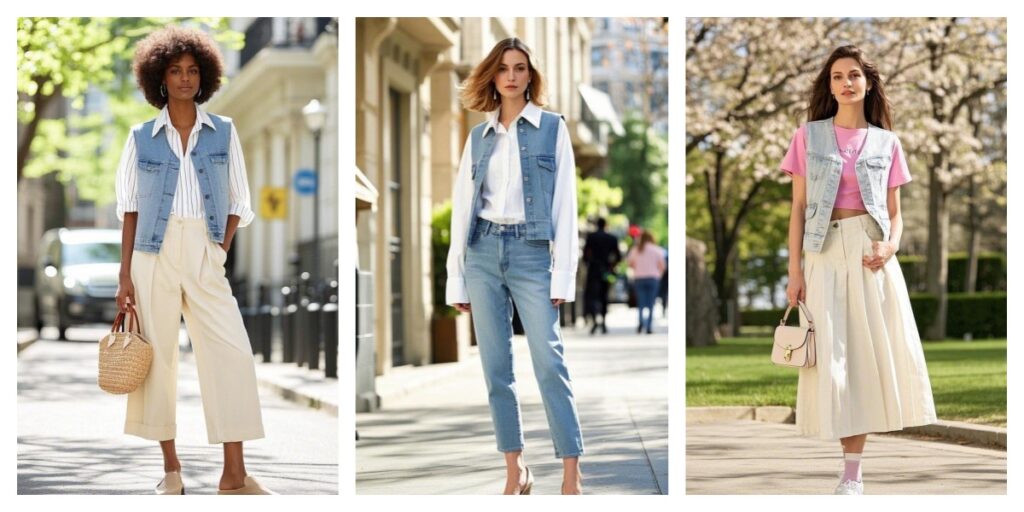Introduction
A split skirt is the clever sartorial chameleon that lives somewhere between trousers and a skirt—two distinct legs hidden beneath the swish of fabric that reads “skirt” at first glance. Because language in fashion is as fluid as the trends themselves, this garment has accumulated several aliases across decades, continents, and dress codes. In the pages that follow, we’ll unpack those names, explore the design details that set a split skirt apart, and offer practical styling advice so you can wear one with confidence in every season and setting.
The Definition of a Split Skirt
For a garment to qualify as a split skirt, it must deliver the optical illusion of a skirt while retaining the functional construction of pants. That usually means generous volume, a center-front pleat or cleverly draped panels that obscure the separate legs, and a rise that mirrors traditional trousers. The design was born from necessity: early-twentieth-century women needed attire that allowed them to ride horses astride, pedal bicycles, or hike without sacrificing modesty in an era dominated by floor-length skirts. Engineers of women’s fashion simply re-imagined the trouser, widening each leg and camouflaging the crotch seam so the resulting silhouette looked like a skirt in motion yet behaved like pants in action. From Edwardian cycling outfits to modern office wear, the split skirt has been a quiet champion of freedom in movement.

Common Names for Split Skirts
1. Culottes
Today, ask most fashion editors about a split skirt and they’ll hand you a pair of culottes. Falling anywhere from just below the knee to mid-calf, these ultra-wide-leg trousers masquerade as an A-line skirt every time you take a step. Designers favor drapey fabrics—think silky crepe, breathable linen, or structured viscose—that swing away from the body and conceal the center seam. Style chameleons at heart, culottes dress up with a blazer and block heels for boardrooms yet feel right at home with canvas sneakers and a slouchy tee at weekend markets. Their forgiving silhouette flatters most body types, giving hips space to breathe while accentuating the waist when belted.
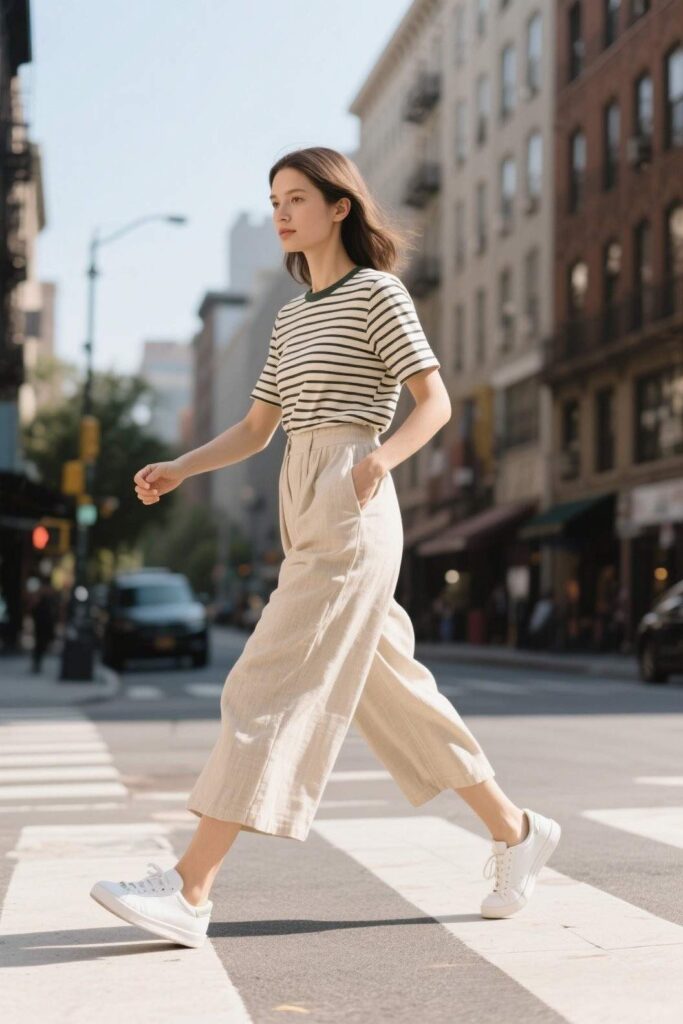
2. Divided Skirt
Before “culottes” dominated fashion glossaries, “divided skirt” held court—especially in equestrian circles, early cycling ensembles, and 1940s sewing patterns. The term spotlights the garment’s dual identity: two trouser legs engineered to appear as one continuous skirt panel. Classic versions came in sturdy wool serge for riding or navy twill for school uniforms, complete with knife pleats that disguised the crotch seam. Wearing a divided skirt allowed women to mount horses astride or pedal bicycles without societal side-eye, marking a quiet yet powerful step toward sartorial independence. Contemporary interpretations nod to that heritage with front-wrap panels, brass buttons, and saddle-friendly midis that pair effortlessly with tall boots.
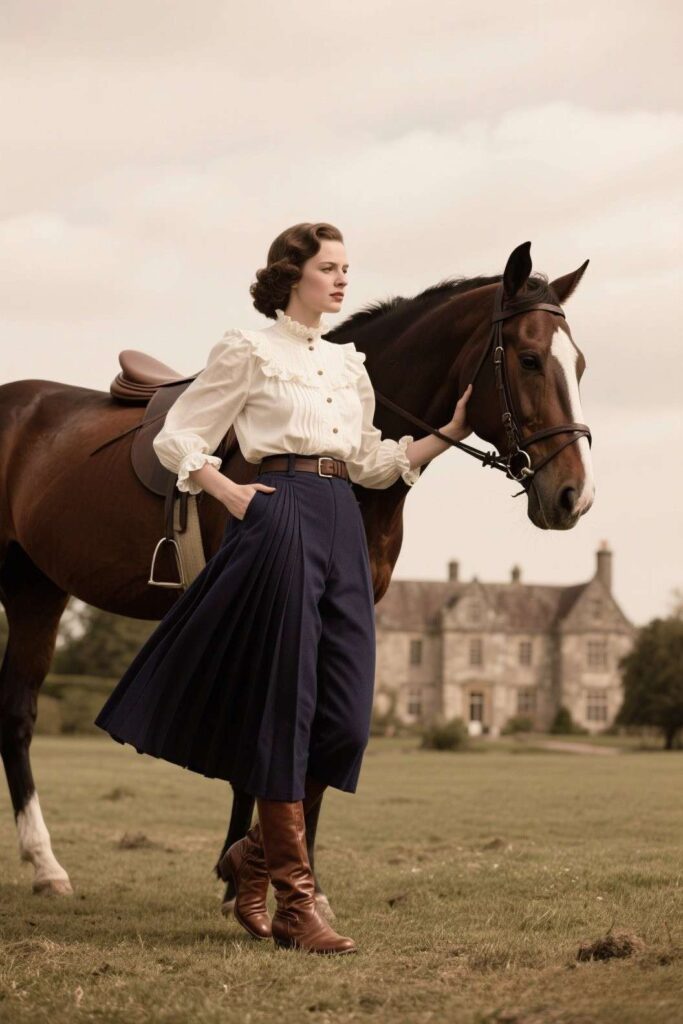
3. Skort
Imagine the practicality of shorts cloaked beneath the charm of a mini skirt and you have the skort—a true hybrid loved by tennis pros, golfers, and on-the-go commuters alike. Most designs feature a discreet wrap, flap, or pleated overlay in front, revealing athletic shorts only from the side or back. Because the cut hugs closer to the thigh, skorts feel sportier than culottes, aligning with performance fabrics such as moisture-wicking jersey, stretch twill, or even neoprene. They excel in high-energy settings: pair a pastel skort with a visor and court shoes for weekend doubles, or dress one up in faux-suede with opaque tights and ankle boots for a brisk city stroll. Function meets flirty—no wardrobe malfunctions in sight.

4. Palazzo Shorts
When designers extend the hem toward the ankle and let each leg billow like a sail, the result is palazzo shorts—arguably the most dramatic member of the split-skirt family. Despite the “shorts” label, these pieces mimic maxi skirts in length while preserving the freedom of trousers. Lightweight silk, rayon challis, or gauzy cotton ensures fluidity; every stride sends waves of fabric rippling around the ankles. Equal parts resort wear and red-carpet statement, palazzo shorts welcome strappy sandals by day and metallic stilettos by night. Cinch the high waist with a statement belt, add a slim tank or off-shoulder blouse, and you’ve unlocked effortless boho glamour with built-in ventilation for balmy evenings.

Key Features That Differentiate Split Skirts
- Fabric & Flow – True split skirts rely on drape. Rayon challis, silk crepe, or lightweight wool fan out like skirt panels, whereas stiff denim or twill would expose the bifurcation too easily.
- Length Variations – Classic culottes hit mid-calf; gaucho styles graze the ankle; city skorts hover above the knee. Each length shifts the vibe: midi for sophistication, mini for playfulness, maxi for bohemian drama.
- Waistline & Silhouette – High waists elongate the leg line and mimic retro skirts, while paper-bag waists add volume. Box pleats disguise the crotch seam; knife pleats create fluid columns. Some designs include wrap fronts that overlap deeply, further blurring the pant outline.
- Closure Details – Side zips preserve a clean front, but front pleat zippers can be hidden beneath top-stitching. Elastic waists appear in lounge or resort versions.
How to Style a Split Skirt
- Casual Days: Slip into soft-denim culottes, tuck in a striped boat-neck tee, and finish with white sneakers. Add a canvas tote and a bucket hat and you’ve nailed effortless weekend chic.
- Office Hours: Choose tailored wool culottes in charcoal, pressed with a sharp crease. Pair them with a slim merino sweater or a crisp button-down, a leather belt, and block-heel pumps. The structure reads as polished as trousers yet offers the novelty of a skirt.
- Formal Evenings: Wide-leg palazzo shorts in silk charmeuse can rival any gown. Wear them high-waisted with a fitted bustier or satin camisole and metallic ankle-strap heels. Statement earrings elongate the neck and balance the volume below.
Seasonal Swaps
- Summer: Linen or cotton culottes in pastel tones, cuffed just below the knee, with espadrilles.
- Autumn: Rust-colored midi split skirt in lightweight corduroy, teamed with knee-high boots and a cropped jacket.
- Winter: Heavy wool gauchos layered over opaque tights, paired with turtlenecks and heeled loafers.
- Spring: Floral crepe variants, denim jacket, low-top sneakers.
Accessories
Belts emphasize the waist (especially essential when the legs are voluminous), and structured bags counterbalance drapey bottoms. Long necklaces or scarves help draw the eye vertically, elongating the frame.
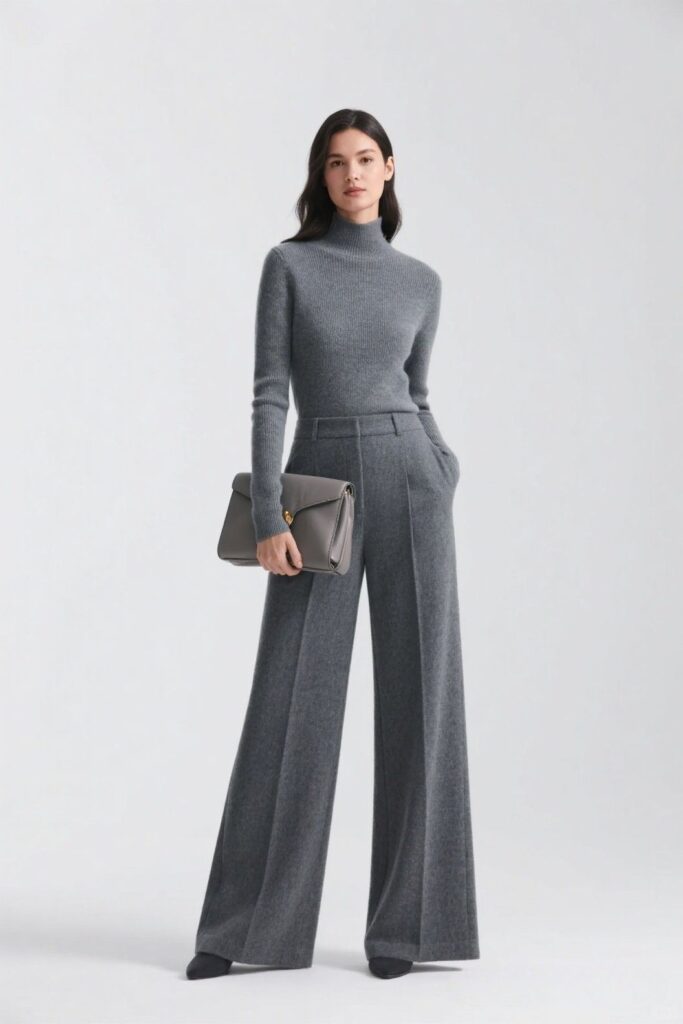
Historical and Cultural Background
At the dawn of the 1900s, women who cycled or rode horseback required mobility without scandalizing society. Tailors responded with divided skirts—sewn so wide that each leg mirrored a panel of a walking skirt. As suffrage gained momentum, practical clothing became a symbol of autonomy, and the split skirt quietly supported that revolution. In France, culotte once referred to men’s knee breeches; by mid-century, the term migrated into womenswear, underscoring how gender constructs in clothing loosened over time. Gaucho pants from South America influenced the romantic, ankle-grazing versions popularized in 1970s bohemian fashion, while Japanese designers in the 1980s reinvented culottes with avant-garde pleating. Even today, regional names persist—Australians may still call them “gaucho pants,” while some European retailers favor “palazzo culottes.” Every label tells a story of culture meeting utility.
When and Where to Wear Split Skirts
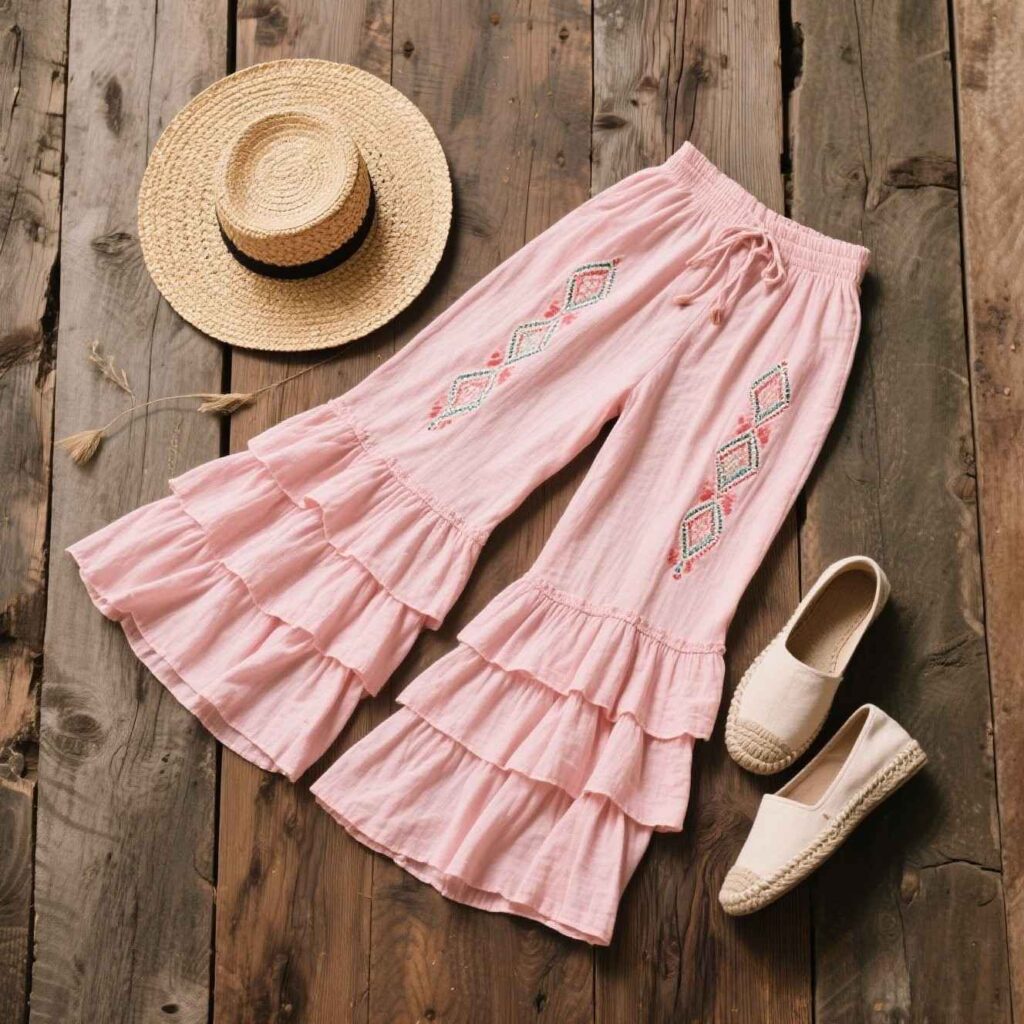
Travel – Airport security loves culottes: you breeze through metal detectors without belts or tight seams, and sit long-haul flights with unrestricted knees. Pair with slip-on loafers and a merino cardigan for temperature swings.
Office – Consult your dress code: if midi skirts are welcome, culottes usually pass muster. Opt for neutral palettes—navy, camel, black—and structured fabric. A simple blouse keeps the silhouette sleek; avoid oversized tops that drown the waist.
Semi-Formal Events – Garden weddings, art openings, or holiday dinners benefit from silk or satin split skirts. Choose jewel tones, then anchor the look with fine-strap heels and delicate jewelry.
Body-Type Tips
- Petite frames: High waist plus cropped hem (just mid-shin) elongates the leg.
- Tall silhouettes: Maxi palazzo shorts emphasize statuesque lines.
- Curvy figures: Fluid fabrics with subtle A-line drape skim hips gracefully; a wrap-front culotte cinches waist while allowing movement.
Purpose-Driven Choices
Cyclists may still prefer tech-fabric skorts for sport, while professionals lean on wool-blend culottes. Consider pockets, wrinkle resistance, and stretch, matching the fabric’s function to your activity.
Conclusion
A split skirt—whether you meet it as culottes, a divided skirt, a skort, or palazzo shorts—is a testament to fashion’s ability to blend grace with freedom. Its many aliases reflect decades of adaptation to women’s changing roles, activities, and tastes. Explore the silhouettes that suit your life: midi culottes for boardrooms, airy palazzo versions for beach escapes, or sporty skorts for weekend tennis. Remember Coco Chanel’s timeless wisdom: “Luxury must be comfortable, otherwise it is not luxury.” In the realm of versatility and ease, the split skirt earns its place as everyday luxury—one swish, two legs, endless possibility.
